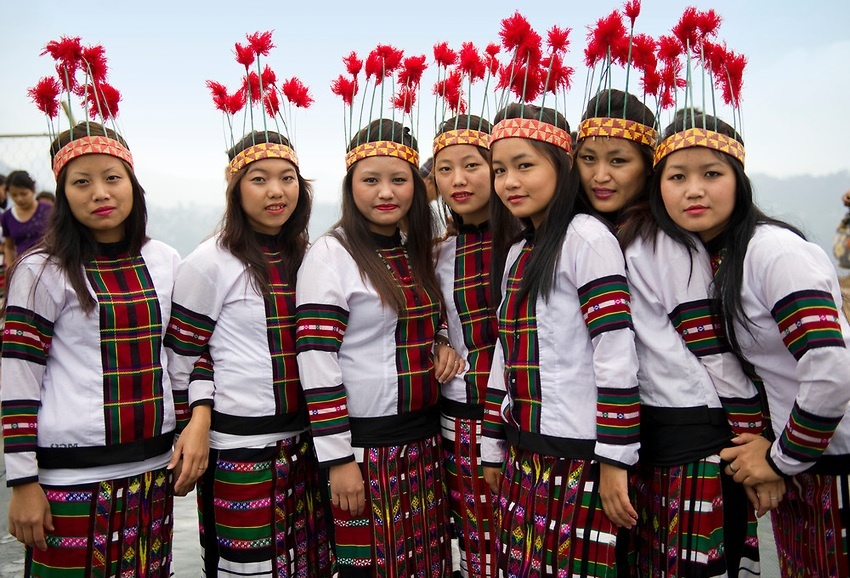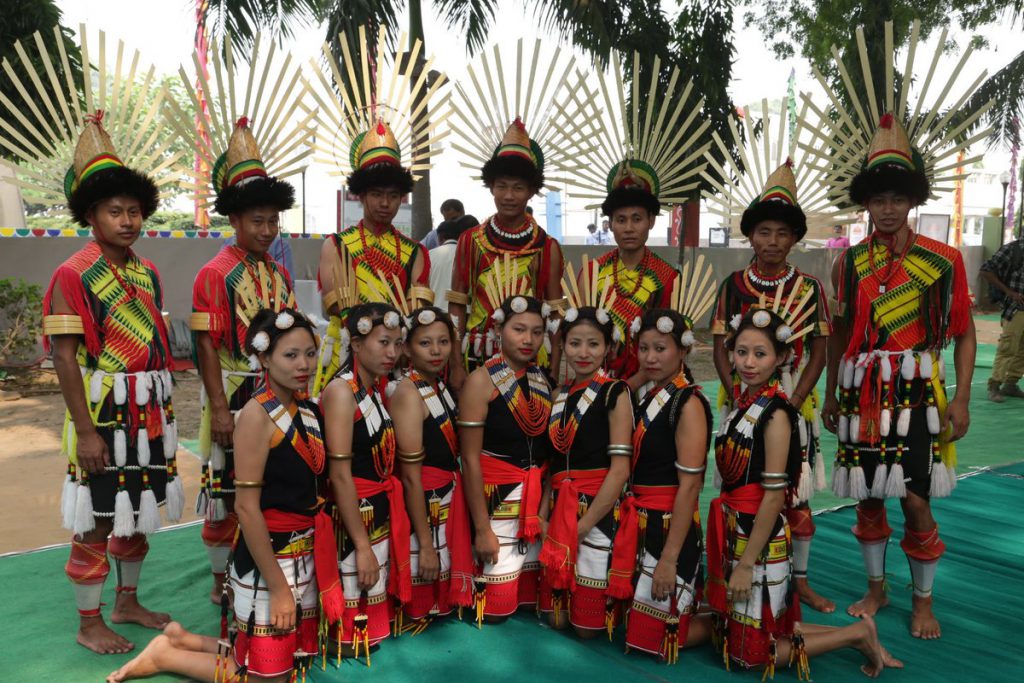The Chakmas are a distinct tribes localized in the south-western part of Mizoram. This tribe belongs to Eastern group of the Indo-Aryan family whose dialect is Chakma, It is a corrupt form of the Bengali language written in corrupt Burmese-script. Risley, a noted Census Commissioner classified them in the group of the Mongolian racial types. The Chakmas emigrated from Arakan and then moved to Chittagong Hill Tracts (now Bangladesh) in the last quarter of 19th century
Among other tribes (whose reference has been made earlier) the Hmar, Paite and Riang figure most on the demographic map of Mizoram. The Riangs are mostly in the morthwest part of Mizoram along the Tripura border, while, the Hmars and the Paite are in the north-east coener of Mizoram. Similarly, the Pangs, Bawms, and Tlanglau are in the south and south-eastern part of Mizoram, mostly in the Poi and the Chakma areas.
Thus, different tribes and sub-tribes came down to the present Mizoram, in successive waves and settled down in different parts of the present Mizoram. (see Map 5). However, the settle life was disturbed by perpetual fear of raid and inter-tribal feuds. The advent of the British rule and the Missionaries activities implanted a sense of love, value, sacrifice, in their minds. Even then, inter-tribal raids and feuds did not stop.
The word ‘Mizo’ is a generic term applying to all the Mizos living in Mizoram and its adjoining areas of Manipur, Tripura, the Chittagong Hill Tract and the Chin Hills. ‘Mizo’ literally means (People of the Highland), ‘Highlander’, an apt term to describe the short, stocky, muscular people who, with great physical vigour, easily climb the steep hills. The Mizos include several sub-tribes. The Military Report of 1930 recorded 15 sub-tribes such as :
- Lushai
- Punte
- Poi
- Khawlhring
- Renthlei
- Lakher
- Khiangte
- Chawngthu
- Paihte
- Roite
- Ralte
- Hmar
- Darlong
- Ngente
- Thado
To this list, Zatlua nga , a Mizo historian adds four more sub – tribes –
- Pautu,
- Tlau,
- Zawngte, and
- Vangchhin
Other reputed historians add some more sub- tribe s such as
- Mirawng,
- Darlawng,
- Bawng,
- Biate,
- Hrangkawl,
- Dawn,
- Tlanglau and
-
Ethnological evidence indicates that the Mizos are of Mongoloid stock having “straight, coarse black hair, dark brown eyes, sparse beard, complete and sharp fold of the eyelid”.



